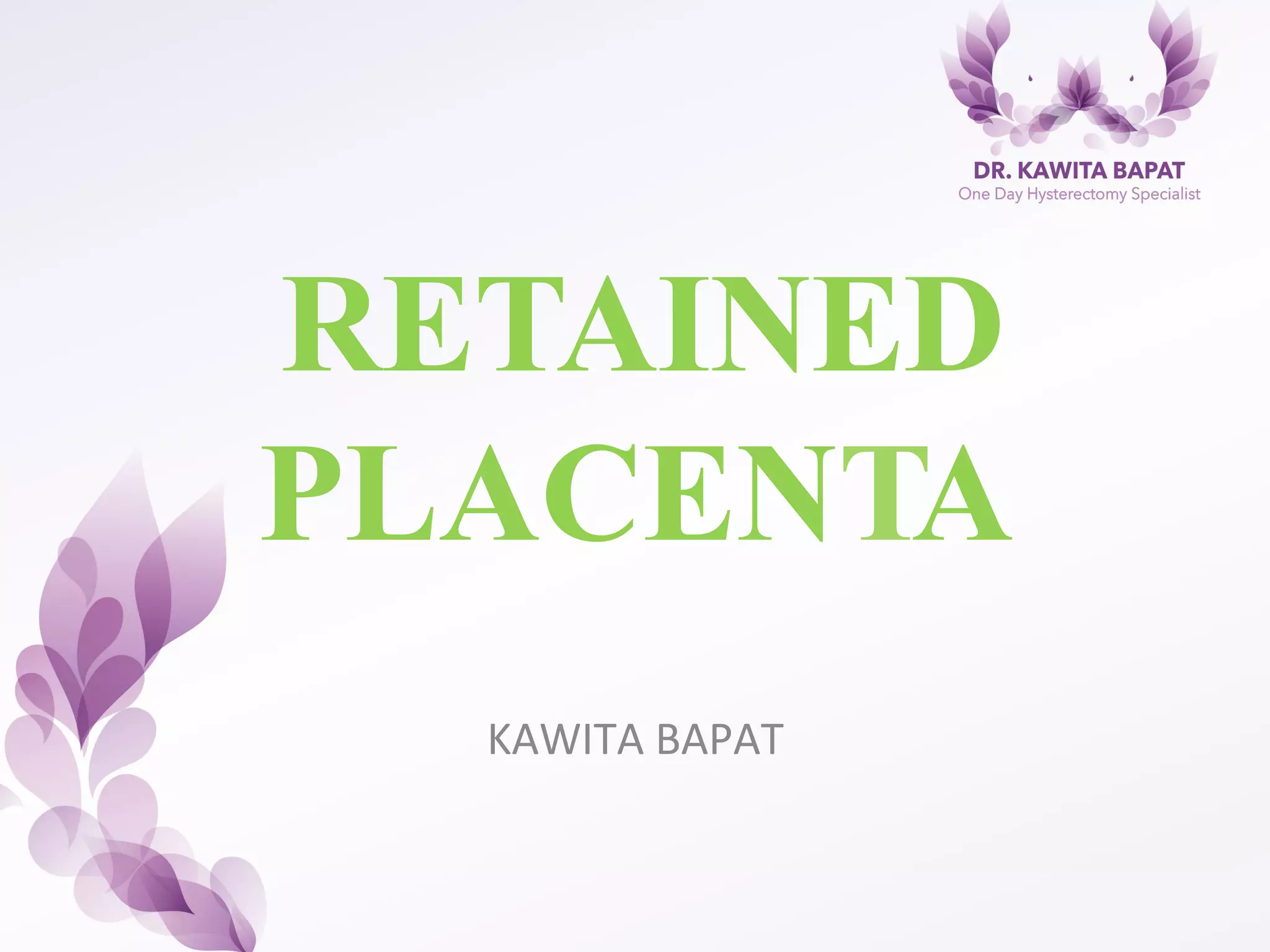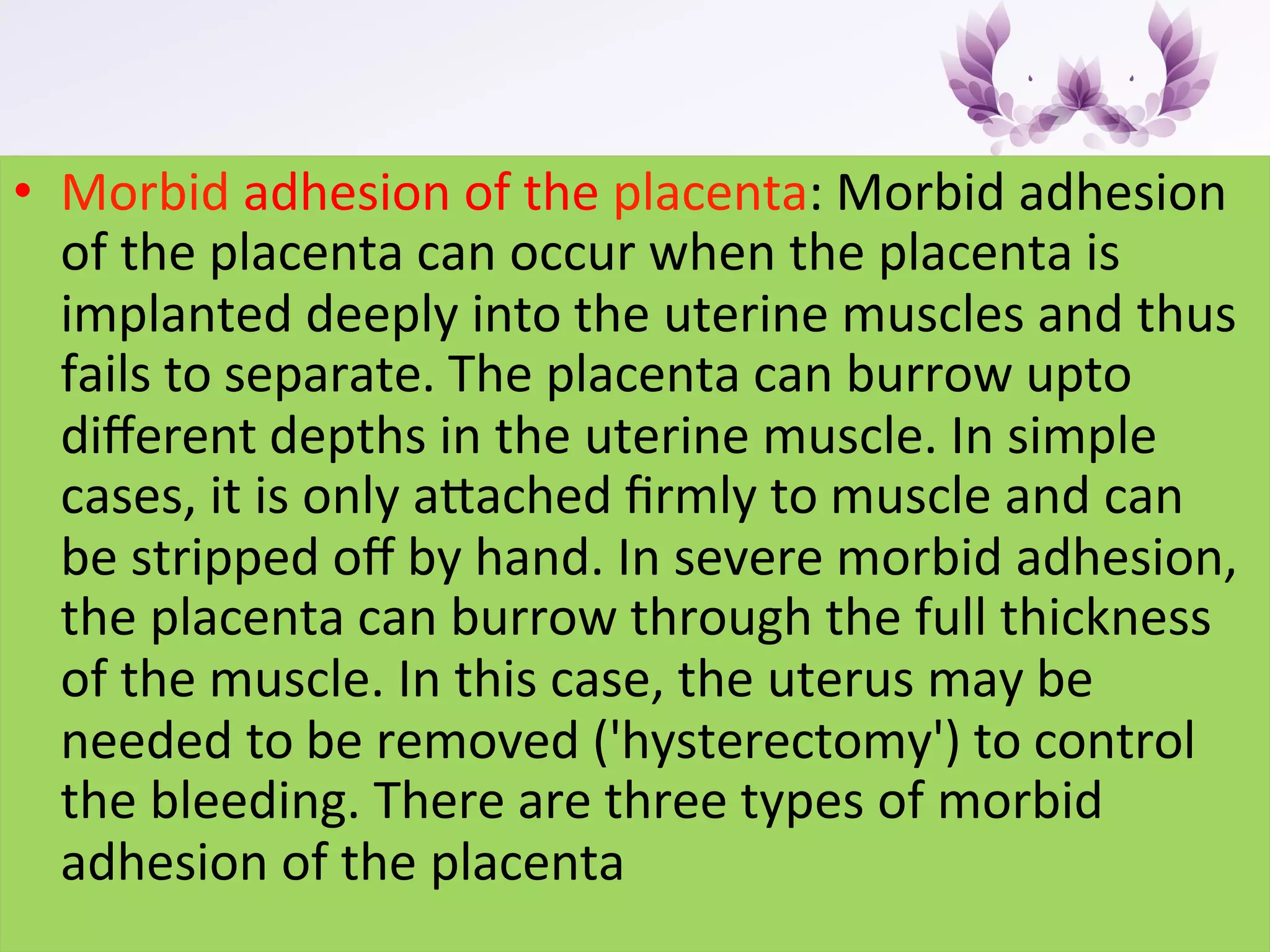The document defines and discusses retained placenta, which occurs when the placenta is not expelled from the uterus within 30 minutes of delivery. There are several potential causes of retained placenta, including failure of the placenta to separate fully from the uterine wall due to issues like uterine atonicity. Management involves controlling bleeding if present and attempting controlled cord traction or manual removal of the placenta in the operating room if needed. Leaving the placenta retained poses risks like severe bleeding.





















